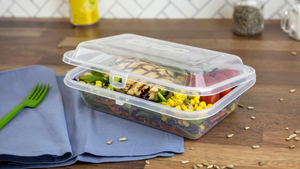PUR sandwich takes a bite out of SMC, other materials
Multi-polyurethane (PUR) composites for structural automotive components could prove a lightweight alternative to metal, sheet molding compound (SMC), and even some thermoplastics. One example being tested is a roof module design that combines a polyurethane sandwich construction with a polyurethane composite.
April 20, 2009
Multi-polyurethane (PUR) composites for structural automotive components could prove a lightweight alternative to metal, sheet molding compound (SMC), and even some thermoplastics. One example being tested is a roof module design that combines a polyurethane sandwich construction with a polyurethane composite. Work continues on such parts, but officials at BaySystems, the global umbrella brand for Bayer MaterialScience’s polyurethane systems houses, say this design has been used to produce prototype roof modules weighing about 25% less than steel alternatives.
Most of the roof module for this sandwich structure is a light honeycomb core, with a small, long-glass-fiber-reinforced edge lending the roof module additional stiffness. Inserts for handles and roof securing elements can also be integrated into it.
Such structures could find a willing automotive market as weight reduction continues to gain force as a driver in automotive design. “These multi-polyurethane composites enable considerable weight savings, thanks to the foam structure typical of polyurethane ... They also boast excellent mechanical properties and good surfaces,” according to Marc Ramos Bosch, a BaySystems automotive specialist who spoke last month at the Utech Conference on PUR developments in the Netherlands. —[email protected]
About the Author(s)
You May Also Like


